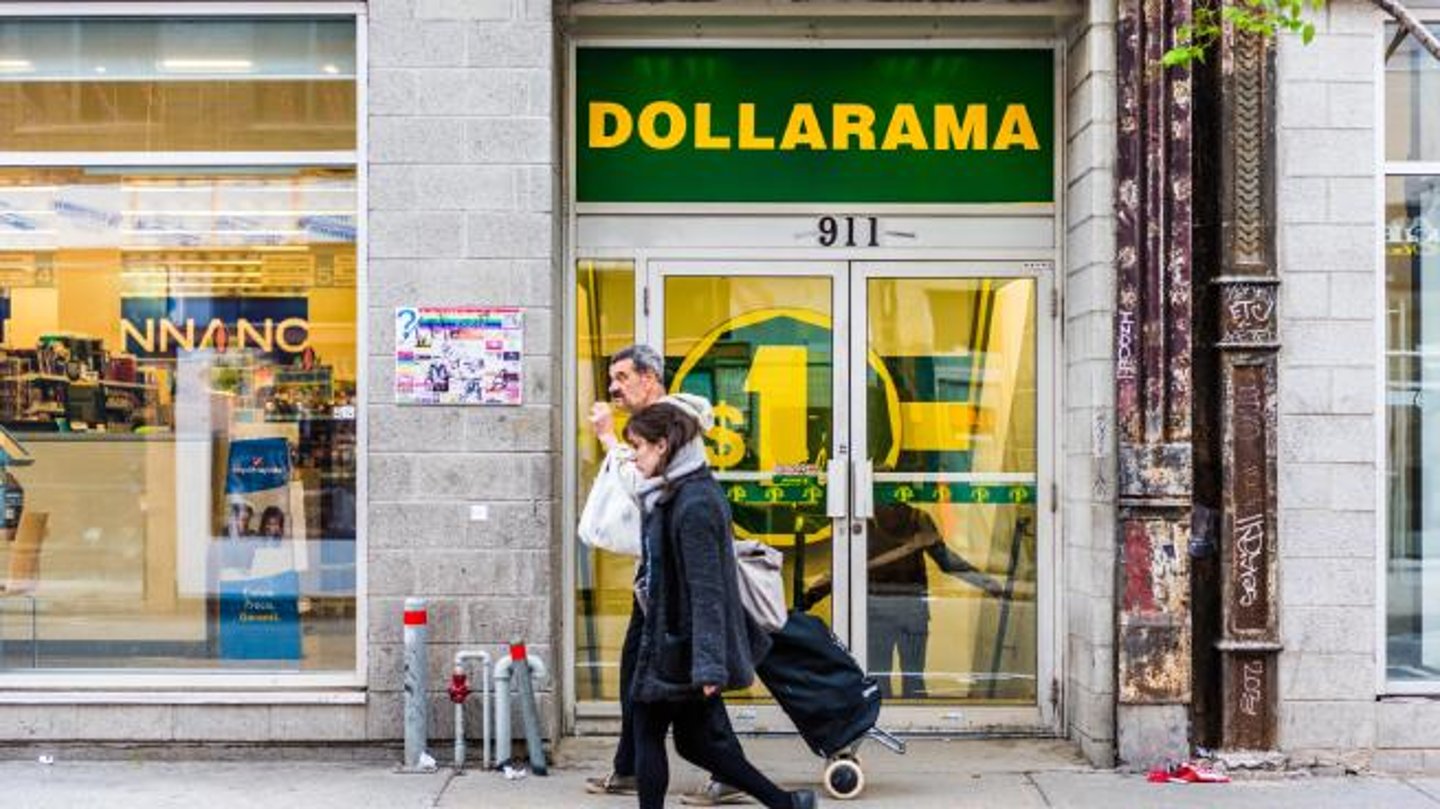Dollarama reports increased profit as it attracts budget-conscious customers
Dollarama Inc.'s new chief financial officer says shrinkage – a metric the company uses to track inventory lost through theft, damage and fraud – has increased but is showing signs of plateauing.
Patrick Bui would not provide numbers to analysts on a Thursday (April 4) conference call asking how prevalent shrinkage was in comparison to prior years or what the company was doing to tackle it, though he said the company had introduced changes meant to address the issue and is open to options including a review of self-checkout kiosks. He painted the increase in lost inventory at the dollar-store chain as part of a "retail industry phenomenon."
"(It's) not uncommon in the industry," he said. "Managing 'shrink' is a high priority at Dollarama, and we've put in place a host of initiatives to combat shrink."
The increase in shrinkage comes as inflation remains above the Bank of Canada's 2% target and customers are grappling with high prices of goods.
Meanwhile, there have also been reports of a rise in shoplifting that has pushed some retailers to remove self-checkout technology and others to boost staffing, cameras and sensors at the kiosks.
READ: The battle against retail theft and loss
Some in the retail industry feel self checkout contributes to shoplifting because it provides more opportunities for customers to steal by scanning only some of their merchandise at the time of purchase.
In October, on the heels of Vancouver police reporting they'd made 258 arrests and recovered $57,000 in stolen merchandise form shoplifting, the general manager for loss prevention at London Drugs said most retailers have seen at least a 20 per cent increase in retail theft in recent years.
Dollarama's uptick in shrinkage didn't weigh heavily on its most recent quarter, which it reported Thursday.
The retailer said it earned $323.8 million or $1.15 per diluted share in its fourth quarter. The result for the period ended Jan. 28 was up from a profit of $261.3 million or 91 cents per diluted share a year earlier.
Sales for the 13-week period totalled $1.64 billion, up from $1.47 billion a year earlier. Comparable store sales rose 8.7% as the number of transactions rose 11.2%, but the average transaction size fell 2.2%.
As it released such figures, it also announced it raised its quarterly dividend by nearly 30 per cent to 9.2 cents per share, up from 7.08 cents per share.
The results pushed Dollarama's share price up eight per cent in mid-afternoon trading to $108.57.
Irene Nattel, an analyst with RBC Capital Markets, said in a note to investors that she took the results as proof that Dollarama is "a standout in Canadian retail" because the numbers reflect a "strong value position" that is "particularly sought after in the current high inflation environment."
Chief executive Neil Rossy bolstered that view, saying the numbers indicate Dollarama is seeing "strong customer demand," which has resulted in increasing store traffic and more customers who are making more than $100,000 a year, are low-income or are newly-landed immigrants.
Many have been drawn in by the broader range of merchandise Dollarama has been able to offer over the last decade as it gradually added higher price points. Its highest price items are now $5.
Asked whether the company has thought about what the next price point it could introduce would be, Bui said, "At this point in time, we have no plans to introduce any other price points."
If Dollarama were to introduce prices higher than $5, it would likely face competition from a broader range of retailers.
The company is instead focused on navigating the high interest rate and inflation environment that has been hampering shoppers.
"Looking ahead, the path of the economy remains uncertain, both for businesses and consumers," Rossy said.
"This makes it all the more difficult to predict future consumer behaviour."
To cope, he said Dollarama will focus on fundamentals like an ongoing refresh of the company's merchandise.



